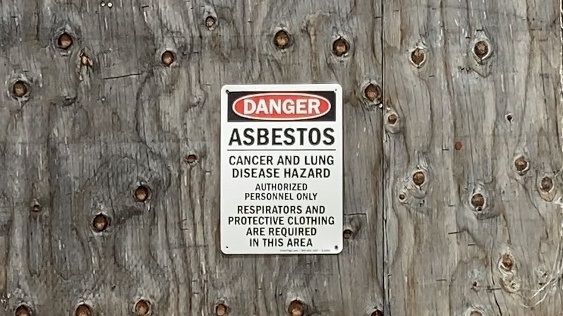The Environmental Protection Agency last week announced a comprehensive ban on asbestos. The move expands upon a 2016 law that dealt with the use of toxic chemicals in every-day products.
The known carcinogen has largely been phased out but is still used in some products.
New York state Department of Environmental Conservation Commissioner Basil Seggos says it’s a long time coming.
“It’s about time. Asbestos should not be in consumer products,” he said.
The EPA said a new rule would ban chrysotile asbestos, the only ongoing use in the United States. It is found in products such as brake linings and gaskets and is used to manufacture chlorine bleach and sodium hydroxide, also known as caustic soda.
“We know all of the lives asbestos have claimed over the years,” Seggos said. “I’m thrilled with the administrators' decision to move forward on this. It’s going to make a difference in the lives of New Yorkers and people all across the country.”
Its ban is something advocates like Bobbi Wilding, executive director of New York-based advocacy group Clean and Healthy, said should be a given.
“We are behind 50 other countries that have already completely banned asbestos, so it's not like the U.S. is doing anything crazy or unusual. Most of the world has already come to grips with this being an extremely toxic chemical."
Wilding told Spectrum News 1 that even though most uses of asbestos have been been phased out, the impacts can still be felt when it comes to uses like vehicle breaks.
“The breaks are designed to wear down,” she said. “The break pads when they are made with asbestos, they break down and we end up with asbestos in the air that were breathing around our transportation thoroughfares.”
She said while this ban is a step in the right direction, asbestos remains in building products used in many older homes, especially in low-income communities.
Like lead paint, it is primarily harmful only if disturbed, but exposure to both materials can put people in danger.
“Homes where people have fewer resources get renovated less frequently so it’s still hiding there, you have things like leaks that can cause that paint to chip and flake, so that’s where you can end up with it being introduced into your home,” she said.
The EPA banned asbestos in 1989, but the rule was largely overturned by a 1991 court decision that weakened the EPA’s authority under the Toxic Substances Control Act of 1976 to address risks to human health from asbestos or other existing chemicals. The 2016 law required the EPA evaluate chemicals and put in place protections against unreasonable risks. Exposure to asbestos is known to cause lung cancer, mesothelioma and other cancers, and it is linked to more than 40,000 deaths in the U.S. each year.



